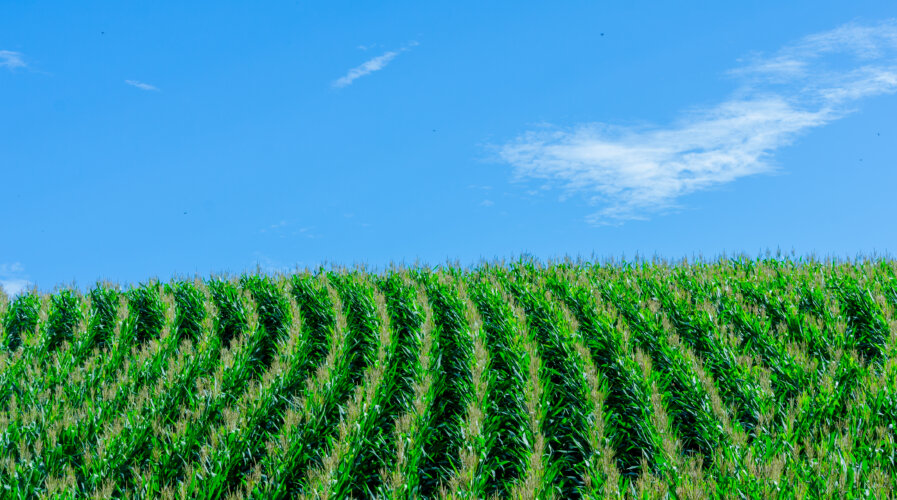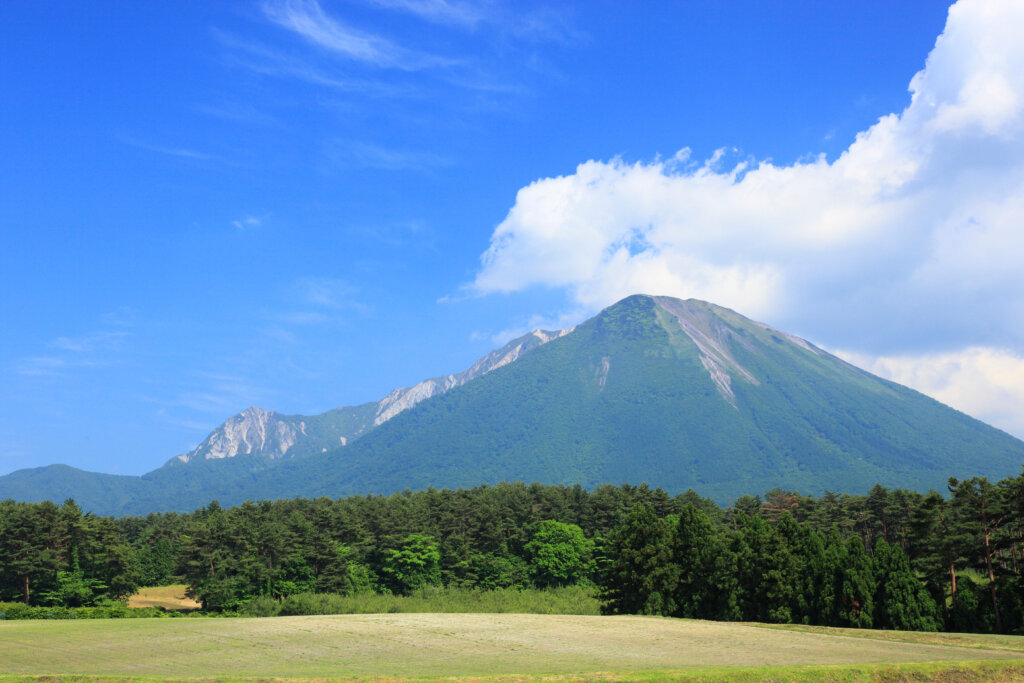
With AWS, Space Shift hopes to improve AI accuracy in the future, especially in ground data collection and model development. (Source – Shutterstock)
Here’s how AWS and Space Shift are using satellites to improve agricultural efficiency and productivity
|
Getting your Trinity Audio player ready... |
AWS continues to innovate the space industry. Be it for space tourism or enterprise solutions, the journey into space for the tech company is only at its beginning and promises endless possibilities. As such, AWS is now looking at how it can contribute to the agricultural industry through its space programs.
When it comes to technology adoption in the agricultural industry, crop management and monitoring are some of the key areas farmers and plantations look into. For most plantation owners and farmers, being able to get insights into their soil quality and the weather enables them to plan and monitor their crops to ensure a good harvest and meet the demands of the market.
This is only possible through sufficient data collection and analysis. Some of the technologies often used for this include IoT sensors being placed on the ground as well as predictive analysis tools monitoring the weather and humidity levels. Some tech companies have even used blockchain to measure the supply chain of the agriculture industry while automation tools have been used in machinery to help with harvesting and packaging.
Despite this, the agriculture industry still faces challenges. For example, in Japan, statistics from the Ministry of Agriculture, Forestry, and Fisheries shows the number of farmers continues to decline, down 39% in 2020 from 2,241,000 in 2005. Because of an aging farming population, with 70% of farmers 65 years old or older, and 11% 49 years old or younger.
The decreasing number of farmers means it is necessary to use data to support efficient farm work, reducing the reliance on manpower. This is where Space Shift comes in.
Space Shift teams up with AWS.
A Tokyo-based space startup, Space Shift develops Artificial Intelligence (AI)-powered software to analyze data obtained from Earth Observation (EO) satellites. The company is now collaborating with Amazon Web Services (AWS) to develop technology for precise crop growth monitoring, called AI-Powered Precision Agriculture Solution. By leveraging AWS’s cloud services, Space Shift will be able to deliver more accurate crop growth assessment with secure, elastic, and cost-effective data handling, and bring value to its global customers in agriculture.
With an increasing number of satellites in orbit, they are able to monitor and automatically record data from large geographical areas to monitor and collect information to address challenges such as fully utilizing data in an agriculture industry that is lagging behind in digitalization. However, technology or software for analyzing satellite data, which can help end users of the data to utilize them easily and effectively is a priority. Space Shift can address this with technology.
Space Shift aims to contribute to realizing a sustainable society through “the optimization of human activities and natural environment” by developing software based on satellite data analysis using AI and Machine Learning (ML), especially focusing on Synthetic Aperture Radar (SAR) satellite data.
The agricultural sector has historically used optical satellites to do remote measurements and calculations to detect crop growth rates. However, because optical satellites cannot conduct observation during cloudy weather, there are practical challenges, including being unable to specify the harvest time or obtain data during the desired time of observation.
SAR satellite data can be used to supplement the times when data cannot be obtained, thus enabling more continuous observation. AI is then used to identify growth status, with SAR data allowing for grasping crop planting and growth status. Leveraging their expertise in AI and ML, Space Shift develops the technology on AWS to contribute to expanding the satellite data utilization market.
Space Shift is currently developing a service that uses SAR satellites to distribute diagnostic information on the growth of agricultural products. The information obtained will not only be used in the agricultural industry but is also being developed for use in various industries such as agricultural product distribution, marketing, advertising industries, and more. In managing vast fields, even inexperienced growers can harvest better if they know the growth conditions of each field. Advertising agencies and manufacturers can improve sales and reduce costs by knowing the season’s timing early enough to run efficient campaigns and properly plan production.

Tottori Prefecture positions the space-related industry as one of the new industries that will be responsible for the future of the prefecture and works towards the creation of a space industry through industry-academia-government collaboration. (Source – Shutterstock)
The harvest from this has been fruitful in Japan. Facing the Sea of Japan, Tottori Prefecture positions the space-related industry as one of the new industries that will be responsible for the future of the prefecture and works towards the creation of a space industry through industry-academia-government collaboration.
Space Shift has focused its attention on smart agriculture by using its technology in space, and in May 2022 opened an R&D center for satellite data utilization technology in Yonago City, Tottori Prefecture, to conduct a demonstration project to monitor crop growth using satellite data for using the prefecture’s specialty green onions as the subject. The growth of green onions from planting to harvest is regularly photographed by Capella Space‘s small SAR satellites, and at the same time, in direct collaboration with farmers who manage large-scale farmland, height and growth spectrum values are manually measured to create a data set as a training data for AI.
Improving AI accuracy.
With AWS, Space Shift hopes to improve AI accuracy in the future, especially in ground data collection and model development. Space Shift plans to use AWS IoT Greengrass to collect and process ground data from multiple edge sensors, transmitting the data from the edge to AWS, securely and low-with latency, using Amazon SageMaker to process the data for AI/ML. Space Shift also plans to use AWS’s fully managed cloud infrastructure to deliver analysis results on crop growth status to customers more quickly.
“Space Shift is anticipating their customers’ needs for secure, reliable Earth Observation data into the future. AWS’s comprehensive cloud services provide the tools to help them meet this goal on a global scale. AWS is committed to supporting customers like Space Shift, to leverage space technologies and the power of the cloud, to improve how we live and work on Earth,” said Clint Crosier, director of AWS Aerospace and Satellite.
For Makoto Kawaoka, CEO of Kawaoka Farm, which is one of the farms that is collaborating with Space Shift and will use Space Shift’s solutions, as the number of farmers decreases due to population aging, it will become even more important to leverage technology to make farming more efficient, and more attractive to new farmers. Kawaoka also pointed out that while experienced farmers can detect the appropriate harvesting and shipping timing, it is very challenging for non-experienced or new farmers to do the same.
“It will be necessary to support them to understand the overall situation for agriculture, especially since it is influenced by the environment. This Project has the potential to help existing farmers and people who are willing to start farming by using technologies such as satellite data, IoT, and AI. I am very much looking forward to realizing it,” added Kawaoka.
Meanwhile, Naruo Kanemoto, CEO of Space Shift, Inc. explained, “Space Shift develops technology for analyzing various changes on the land by SAR satellite data and AI. In the agricultural sector, data for analyzing changes in farmland by SAR satellite is obscure, so it is necessary to develop an AI algorithm combined with ground data. Currently, it takes a lot of time and resources to measure crops by hand, but it is important to collect data precisely to develop high-accuracy AI that can detect more crop types.”
“By utilizing edge AI processing and management function of IoT device provided by AWS Greengrass, it is possible to automate ground data measurement and automatically create a huge amount of training data for AI. Efficient development of AI is possible by utilizing Amazon SageMaker and we expect to accelerate the improvement of AI analysis capacities for SAR satellite data. We will continue to help resolve problems for farmers and regional revitalization through AI technology developed by our company,” added Kanemoto.
READ MORE
- Safer Automation: How Sophic and Firmus Succeeded in Malaysia with MDEC’s Support
- Privilege granted, not gained: Intelligent authorization for enhanced infrastructure productivity
- Low-Code produces the Proof-of-Possibilities
- New Wearables Enable Staff to Work Faster and Safer
- Experts weigh in on Oracle’s departure from adland


